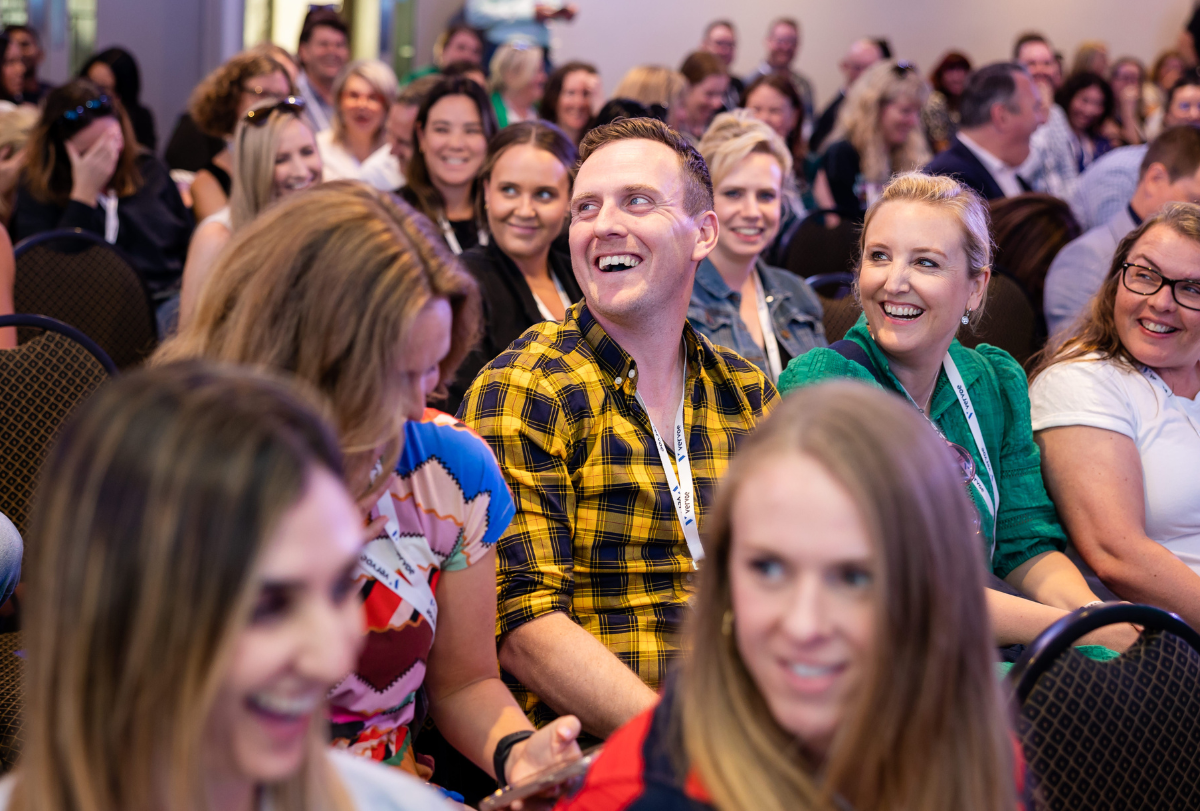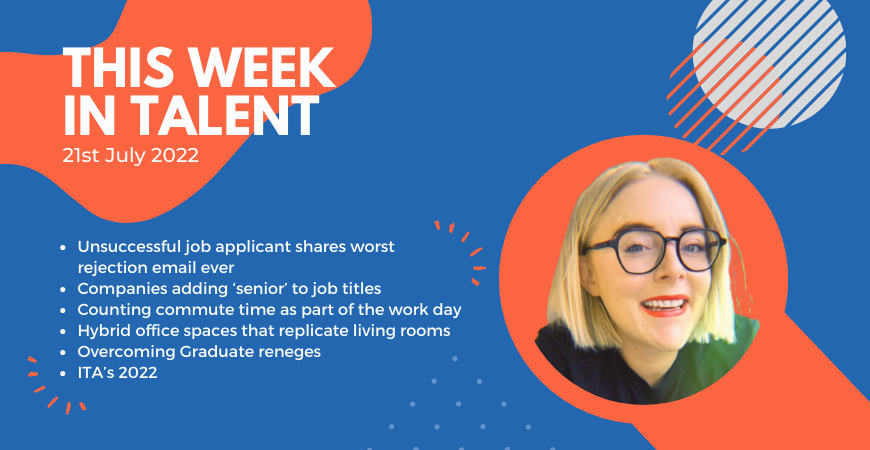We recently heard about the stellar job that MRPV (and the other major transport infrastructure project departments within state government) did recently on their grad recruitment campaign, and we just had to pick Jodie Le’s brain about some of the challenges her and her colleagues faced when tasked with running a volume recruit online at short notice.
- How did you typically recruit grads prior to COVID, and how many grads? Volume of applications etc?
Graduate recruitment can take up to 8 months (up to 5 months of active recruitment and 3 months planning and marketing). The length of time is reflective of a range of elements that make graduate recruitment unique to other bulk recruitment processes. It’s the combination of:
- volume applications between 5000-20000 depending on the size of the organisation;
- robust shortlisting stages which typically include eligibility screening, cognitive testing, video interviews, assessment centres and panel interviews;
- limited number of available positions;
- the expectation that the pool of graduates you hire will be the future leaders of the organisation; and
- the competitive graduate market – particularly for industries such as STEM.
In 2020, we had over 4000 applications for 100 positions with most roles in Engineering. A goal without a plan is just a wish and so project planning is key to success. If you’re a small org this can be scary to do without a fancy corporate tool – but never fear, there are many free ones out there that can help you and are super useful and if in doubt nothing beats a free GANTT chant under ‘Templates’ in Excel #Tip1 – Free planning tools
There is no doubt that many of these applicants are capable and competent, but often, recruitment is a numbers game. You’re trying to get the best of the best as quickly as possible, yet you never actually meet the candidate until assessment centres which can be well over six weeks since applications close. In the case of 2020, you never actually meet them at all!
- How did you pivot your approach once we went into lockdown? (Ie. working groups, brainstorming, trial and error etc.)
The assessment centre (AC) process was the biggest challenge many grad recruiters faced in 2020. Put simply, ACs aim to compare a group of candidates by assessing their observable performance/behaviours against a list of competencies needed for the role. ACs are usually conducted face to face. As a recruiter in an AC room, you’re able to make an assessment of a candidate’s suitability based on the interactions candidates have with each other, their body language, the ‘feel’ of the room… and the goldmine in observing the unspoken stuff that happens. Easy to do this while staring at a 5×5 grid on a video call …. said no recruiter ever.
Well, challenge accepted! When thinking about how to pivot this approach, it was important to ask ourselves … what is it actually that we are trying to achieve by replicating these ACs online? Is there a better way to get what we need? It’s very easy to get caught up in ‘this is how we’ve always done it’, ‘oh it’s just what we do’. If you’re not able to confidently answer ‘why’ to these questions, then ask yourself … why are you really doing it? And then ask why again … 4 more times.
Tip #2 – 5 Whys Root Cause Analysis
Using a human-centered design (HCD) approach Tip# 3 – HCD for Recruiting , we spent some time discovering and defining the actual problem we were trying to solve. Without boring you with the details of this process, we ultimately determined that the problem remained the same – we still wanted to assess interpersonal skills and the best way to do this was to have candidates interact with each other.
- What are some of the challenges that arose whilst doing this? (Ie. any spanners in the works or fuck ups?)
I recall leading up to the AC period in the grad recruitment world you begin to see posts trickled in on LinkedIn. They were either different orgs promoting their ‘innovative’ new approach or businesses trying to promote their hiring tools. As a fellow grad recruiter, you couldn’t help but question whether what you had designed was enough to compete in the new online grad market. This was the exact time to trust your hiring instincts and the old adage ‘don’t fix what’s not broken… just give it a fresh coat of paint’. That’s how it goes, yeah?
- How did you overcome the challenges?
The fresh coat of paint for us meant trusting in our plan, but leveraging the tools and resources that would make the process easier and more enjoyable for the candidates. I’ve listed a couple of the problems we faced below:
Problem: Awkwardness of generic structured group exercises via break out rooms with at times, more assessors (with their videos off in a slightly stalkerish style) than graduates in the room.
Solution: For the ACs we used Zoom. The more candidates felt comfortable, the more they were able to put their best foot forward and the more accurate our assessments would be. Activities were based on real scenarios that were tailored to the discipline of the group. Candidates were asked to present to the assessors who were actively involved in the activity. This approach enabled candidates to feel comfortable with the content, gave them an insight into what they’d be doing in the organisation while allowing each person an opportunity to speak. Make it fun, make it short yet meaningful and create the environment for everyone to have a voice. This means no more ‘If you were on a desert island’ activities. #sorrynotsorry
Problem: Coordinating multiple online assessment centres efficiently.
Solution: This was a very clear winner of going virtual in 2020. Gone were the days of lugging around my training trolley, pull up banners and arts and crafts which then led to lower back pain for weeks after the facilitation of these AC days. What it does require, though, is a very concise booking system for candidates and assessors. We used the online booking system in our applicant tracking system (ATS) for applicants and good old Excel in SharePoint for the assessors within our business. Assign one or two people to solely manage this process and don’t forget that the little things matter. This means not forgetting to confirm attendance, sending all the relevant details and providing a contact email that is monitored to promptly answer any questions, because grads have MANY … many questions.
Problem: Recording, consolidating and calibrating scores across 30+ ACs and 50+ assessors. Previously each assessor recorded their notes and scores via pen and paper which was then manually entered into an Excel spreadsheet.
Solution: We called in reinforcements (PredictiveHire) to assist us with this and we knew very quickly that it would be the best bang for buck based on a risk (time and effort) vs. value (objective ‘just in time’ data) analysis. While Predictive Hire showcased a range of solutions, we really only needed one of them which was the ‘Virtual Assessment’ tool. This tool was a one stop shop that had in-built scoring guidance to minimise bias, automated calibration, auto save note taking and live scores and ranking. It offered a solution that otherwise would have been a full-time resource managing a shared Excel doc for the duration of the assessment centre period … gross! When working with a supplier, you don’t have to look far to get those pushy sales/marketing vibes. Just remember to only ever buy what you need and if they are reluctant to separate the product – negotiate, negotiate, negotiate, and remember that YOU are the client!
- How did you ensure the onboarding was smooth and successful?
Remember that numbers game I mentioned? Well it’s not actually over until the graduate commences on Day 1. The grad market is super-hot and the 2019 GradConnection survey tells us that renege rates were 16% with 35% admitting they would accept an offer and keep looking for opportunities. To tackle this, we put together a structured and engaging ‘keep warm’ plan that would assist us in building an emotional connection between the new graduate and the organisation. We figured that grads were less likely to renege once they felt connected to a person within the organisation (e.g. the recruiter who has been sooooo lovely and supportive throughout the process), the possibilities the organisations presented etc. Keep your plan light, varied and genuine because on the flip side, you also run the risk of making them feel overwhelmed.
One of the most beneficial and engaging activities I’ve designed and facilitated is ‘Hopes, Fears and Future’. I get the graduates together around October (virtually or face to face) and as a group world-café style, they share their hopes for the program, any fears they may have, and their blue-sky thinking plans for their future careers. This activity establishes a common ground for the graduates, authentically connects them to each other and reminds them that they aren’t alone. The information is also a gold mine for the Graduate Program Manager who can then tailor the program to address the hopes, fears, and future. You can find more engagement ideas here Tip # 4 – 15 Key Graduate Engagement Tips
- Outcome? (How many grads recruited, feedback on Culture Amp)
In a recent survey graduates rated their experience so far (they are 3 weeks in) with the organisation 9.5 out of 10. 100% of graduates agreed that the induction and onboarding process prepared them for starting in the organisation. #warmfuzzies
- Any lessons learned, and anything that you will incorporate into your next Grad recruit?
My hot tips are:
- Plan for success. If the recruitment team is different to the graduate program management team then it’s important to get together early and often so you’re clear on what ‘type’ of graduate your organisation wants
- Be clear on your graduate employee value proposition (EVP) and make this visible to applicants.
- Innovation is not transformation. Don’t get caught up trying to modify your usual process to fit an online approach when it still works well with some minor adjustments. Instead, review the actual problem using the 5 Whys, AND THEN think of the solution.
- Design and tailor your AC activities using a HCD approach. The candidate experience can be directly linked to the quality of the outcome.
- Use the online assessment tools available strategically. Don’t outsource what you don’t need to, instead ask yourself where you can save the most time and effort.
- Tailor the shortlisting for each discipline. E.g. For our ‘Graphic Design’ stream of candidates we swapped out the usual ACs for a panel portfolio presentation as this was more aligned to the requirements of the discipline.
- Actually, give a shit about the graduates. It’s never lost on me the very special privilege graduate recruiters have, to be able to shape the beginning of someone’s career and, ultimately, their life. Remind yourself of this when you’re on your 50th video interview – it may be your 50th, but they only get the one opportunity.
- Trust your hiring instincts. When making a hiring decision with grads, recruiters have many data points e.g. academic transcripts, CV, psychometric testing results, video /AC/ panel interview scores. When making the final decision, it’s important to see these data points as a whole package and if something seems fishy… trust your instincts and ask the questions!
If you’d like to find out more about how Jodie tackled this volume graduate recruit, you can find her here.




























